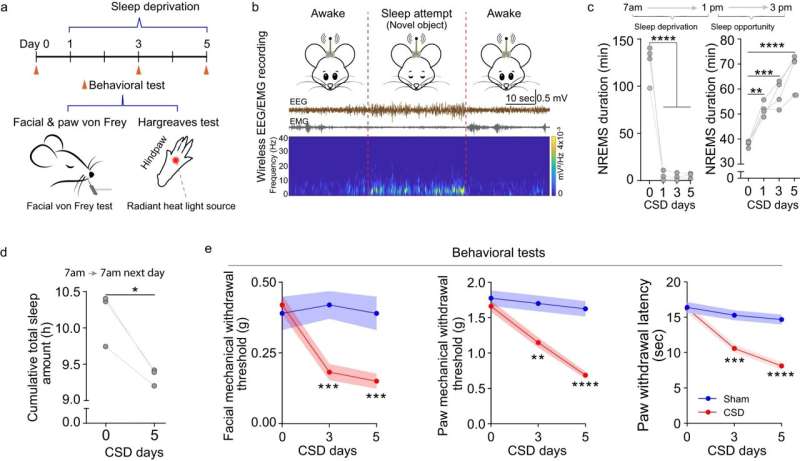This article has been reviewed according to Science X's editorial process and policies. Editors have highlighted the following attributes while ensuring the content's credibility:
fact-checked
trusted source
proofread
Research reveals how sleep disruption can exacerbate pain

People often experience headaches and body pain after a lack of sleep, but the mechanisms behind this phenomenon are unclear. A new study led by investigators at Massachusetts General Hospital (MGH), a founding member of Mass General Brigham (MGB) and published in Nature Communications reveals that a certain chemical messenger, or neurotransmitter, plays a major role.
Through experiments conducted in mice, the researchers found that the heightened pain sensitivity than can result from chronic sleep disruption (CSD)—or CSD-induced hyperalgesia—involved signaling from a part of a brain known as the thalamic reticular nucleus (TRN).
Analyses of metabolites showed that the level of N-arachidonoyl dopamine (NADA), a type of neurotransmitter called an endocannabinoid, decreased in the TRN as a result of sleep deprivation.
Activity of the cannabinoid receptor 1, which is involved in controlling pain perception, also decreased in the thalamic reticular nucleus after CSD.
Administering NADA to the TRN reduced CSD-induced hyperalgesia in mice.
This beneficial effect of administered NADA could be countered by blocking the cannabinoid receptor 1, suggesting that both the receptor and NADA play a role in pain sensitivity due to sleep deprivation.
"We provide a mechanism as to how sleep disruption leads to exaggerated pain, suggesting that harnessing the endocannabinoid system might break the vicious cycle between pain and sleep loss," says co–senior author Shiqian Shen, MD, the clinical director of MGH's Tele Pain Program.
More information: Weihua Ding et al, The endocannabinoid N-arachidonoyl dopamine is critical for hyperalgesia induced by chronic sleep disruption, Nature Communications (2023). DOI: 10.1038/s41467-023-42283-6





















